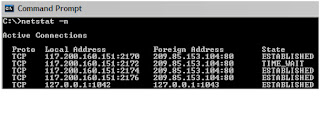OSI HAS 7 LAYERS
LAYER 7: APPLICATION
• The application layer is the OSI layer that is closest to the user.
• It provides network services to the user’s applications.
• It differs from the other layers in that it does not provide services to any
other OSI layer, but rather, only to applications outside the OSI model.
• Examples of such applications are spreadsheet programs, word processing
programs, and bank terminal programs.
• The application layer establishes the availability of intended
communication partners, synchronizes and establishes agreement on
procedures for error recovery and control of data integrity.
LAYER 6: PRESENTATION
• The presentation layer ensures that the information that the application
layer of one system sends out is readable by the application layer of
another system.
• If necessary, the presentation layer translates between multiple data
formats by using a common format.
• Provides encryption and compression of data.
• Examples :- JPEG, MPEG, ASCII, EBCDIC, HTML
LAYER 5: SESSION
• The session layer defines how to start, control and end conversations (called
sessions) between applications.
• This includes the control and management of multiple bi-directional messages
using dialogue control.
• It also synchronizes dialogue between two hosts' presentation layers and
manages their data exchange.
• The session layer offers provisions for efficient data transfer.
• Examples :- SQL, ASP(AppleTalk Session Protocol).
LAYER 4: TRANSPORT
• The transport layer regulates information flow to ensure end-to-end
connectivity between host applications reliably and accurately.
• The transport layer segments data from the sending host's system and
reassembles the data into a data stream on the receiving host's system.
• The boundary between the transport layer and the session layer can be
thought of as the boundary between application protocols and data-flow
protocols. Whereas the application, presentation, and session layers are
concerned with application issues, the lower four layers are concerned
with data transport issues.
• Layer 4 protocols include TCP (Transmission Control Protocol) and UDP
(User Datagram Protocol
LAYER 3: NETWORK
• Defines end-to-end delivery of packets.
• Defines logical addressing so that any endpoint can be identified.
• Defines how routing works and how routes are learned so that the
packets can be delivered.
• The network layer also defines how to fragment a packet into smaller
packets to accommodate different media.
• Routers operate at Layer 3.
• Examples :- IP, IPX, AppleTalk
LAYER 2: DATA LINK
• The data link layer provides access to the networking media and physical
transmission across the media and this enables the data to locate its
intended destination on a network.
• The data link layer provides reliable transit of data across a physical link
by using the Media Access Control (MAC) addresses.
• The data link layer uses the MAC address to define a hardware or data
link address in order for multiple stations to share the same medium and
still uniquely identify each other.
• Concerned with network topology, network access, error notification,
ordered delivery of frames, and flow control.
• Examples :- Ethernet, Frame Relay, FDDI.
LAYER 1: PHYSICAL
• The physical layer deals with the physical characteristics of the
transmission medium.
• It defines the electrical, mechanical, procedural, and functional
specifications for activating, maintaining, and deactivating the physical
link between end systems.
• Such characteristics as voltage levels, timing of voltage changes, physical
data rates, maximum transmission distances, physical connectors, and
other similar attributes are defined by physical layer specifications.
• Examples :- EIA/TIA-232, RJ45, NRZ.




